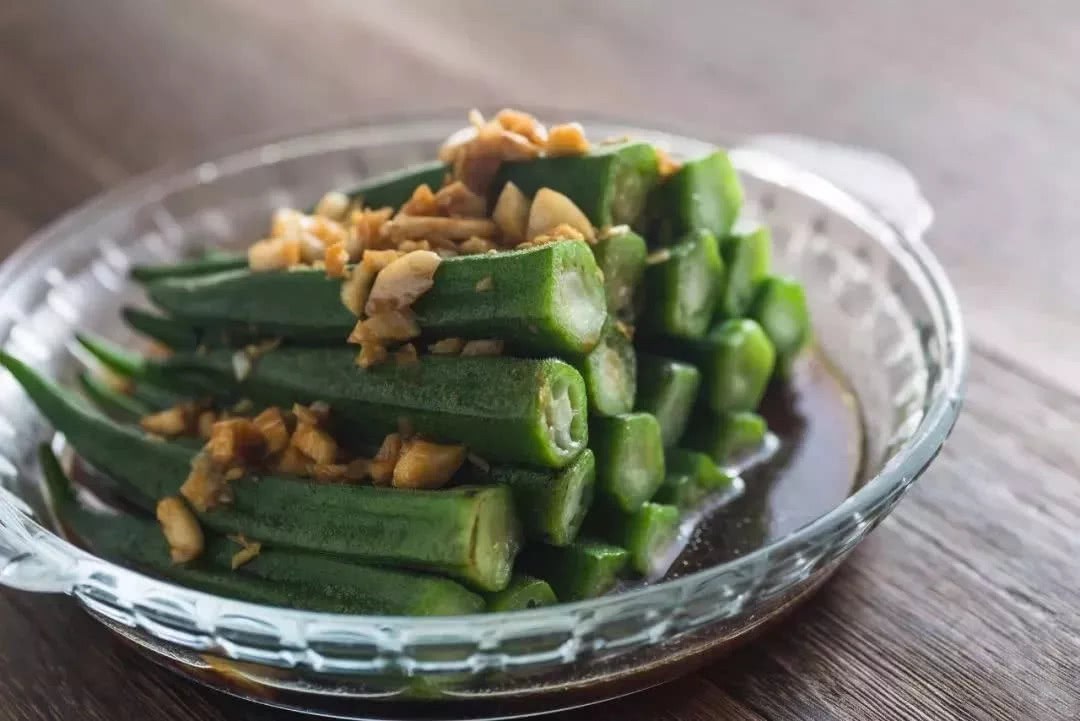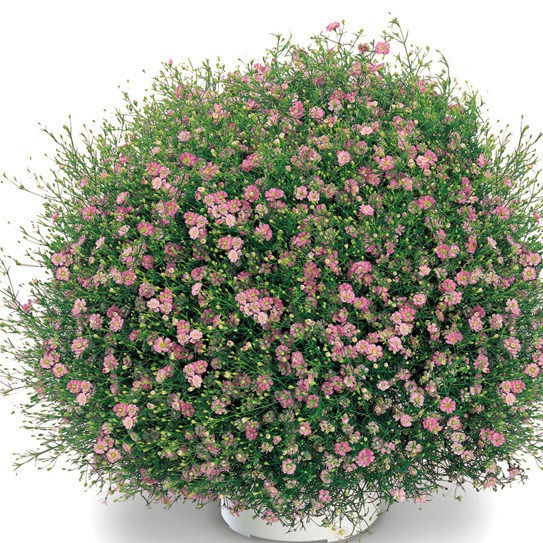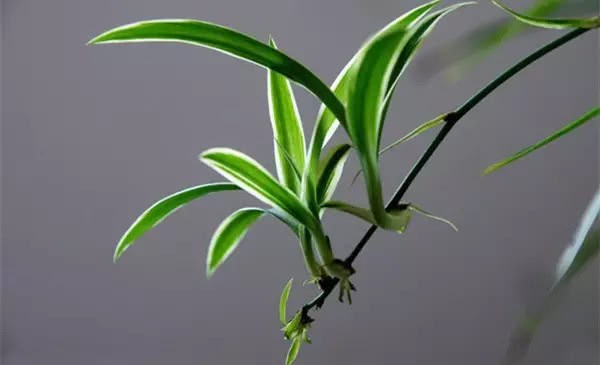Don't make a mistake about the distinction between poisonous and non-toxic plants.

A couple in Chengdu live in ICU.
Just because of eating okra?
News review
A couple in their 40s were sent to the Sichuan people's Hospital for emergency ICU a few weeks ago, according to Deng Lei, deputy chief physician of the Sichuan Provincial people's Hospital.
"it takes seven or eight people to control them!" After treatment by the treatment team, the condition of the two men gradually stabilized. The couple then said they bought okra at the vegetable market and cooked it at dinner.
Mistakenly bought the mandala for okra.
Datura
In recent years, because of its high edible value, okra
Become the new favorite of the citizens at the dinner table.
But what is little known is that
There is a highly poisonous plant--
Mandala looks a lot like okra.
Okra
In recent years, because of the recognition of mandala as okra
And the news of accidental ingestion and poisoning is often reported in the newspapers.
Is "poisonous vegetable" far away from us?
No
Many "poisonous vegetables" look like edible vegetables.
People should pay attention to distinguish when buying vegetables.
Don't get confused!
It could be life-threatening!
The fourth West China Hospital of Sichuan University
He has also specially published the popular science knowledge of distinguishing poisonous vegetables.
Next, draw the point!
Teach you to stay away from the "pit" of these poisonous vegetables!
Taro vs dripping Guanyin
Taro
Taro belongs to the same family as Dishui Guanyin.
One of the common vegetables
Its surface mucus can cause allergy in contact with the skin.
Taro can't be eaten raw, and its cooking toxicity disappears.
Alocasia macrorrhiza
Dishui Guanyin, Amorphophallus of Araceae
Aliases: sea taro, wild taro,
Taro, big root taro, taro, etc.
Because it blossoms like Guanyin
The moist environment is often named for dripping along the leaf edge.
Its bulbs and leaves have medicinal value and are mostly used as ornamental.
The whole plant of Dishui Guanyin is poisonous and its rhizome is toxic.
Redness, swelling, itching and pain may occur in contact with the skin
Even systemic symptoms.
Contact with the eyes can cause conjunctivitis and blindness in severe cases
Accidental ingestion can cause salivation, numbness, heartburn,
Nausea, vomiting, abdominal pain, diarrhea
Even liver and kidney function damage, asphyxia, heart failure and so on.
Accidental ingestion treatment: there is no specific antidote, vinegar and ginger water can be used outside the hospital to gargle, induce vomiting, and immediately sent to the hospital.
Blood skin vegetable vs false blood skin vegetable
Blood skin vegetable
Perennial herbs of Panax notoginseng in Compositae
Or purple back vegetable, which is planted in many places in our country.
Medicinal or edible
The common dishes in South Sichuan are fried pig liver with blood skin vegetables.
Fake blood skin vegetable
Fake blood skin vegetable
It is commonly known as "Hua er Cai, see swelling and elimination, blood angelica".
In the past, people used to do abortions.
It has the effect of promoting blood circulation and removing blood stasis.
The edge of the leaf has curly teeth, which is longer than the blood skin.
It blossoms and chews in the mouth with a bitter taste.
There are cases of accidental poisoning in Luzhou, Yibin and other areas.
The patient appears
Dizziness, nausea, vomiting, abdominal pain, diarrhea and other symptoms
Ginseng vs Phytolacca
Ginseng
Ginseng, perennial herb of Araliaceae
It has the reputation of "king of grass".
It is the best of "nourishing yin and tonifying the kidney, strengthening the body and strengthening the foundation".
Phytolacca acinosa
Phytolacca acinosa
Also known as Phytolacca and Phytolacca
Alias big amaranth, native ginseng, wild radish, rouge, etc.
The white hypertrophic root is used as medicine, and the red root is highly toxic.
For external use only
Phytolacca acinosa is more toxic.
The main constituents are triterpenoid saponins.
Also known as pokeweed saponins, soluble in water
If taken in large quantities, it can be poisoned.
Characterized by nausea and vomiting, abdominal pain, diarrhea,
Tachycardia, shortness of breath, inarticulate speech,
Restlessness, hallucinations, convulsions, coma,
Decreased blood pressure and dilated pupils
Died of myocardial paralysis.
Accidental ingestion treatment: vomiting can be induced and sent to the hospital immediately.
Honeysuckle vs hook kiss flower
Honeysuckle
Honeysuckle, correct name honeysuckle
Herbs of the genus Lonicera of honeysuckle family
Because the flowers are white at the beginning
Later turned yellow and got the name honeysuckle.
As a good medicine for clearing heat and detoxification.
Hook and kiss flower
Hook kiss, alias Hu Mengteng, broken intestine grass,
Chaoyang grass, big tea medicine, big tea vine, Heban medicine, Pueraria lobata, etc.
Woody vines of the family Leguminosae and Gelsemium
According to legend, it is the thing that poisoned Shennong.
It contains a variety of alkaloids
It has strong neurotoxicity.
Mainly invade the central nervous system and autonomic nervous system.
Low dose can promote animal growth.
The victim initially developed nausea, vomiting,
Gastrointestinal symptoms such as abdominal pain and salivation
He soon developed dizziness, weakness of the limbs,
Vision loss, diplopia, dysphagia,
Neuromuscular symptoms such as coma and convulsions
There are also ptosis, dilated pupils and so on.
Performance similar to that of Atto is easy to be misdiagnosed.
Mostly died of respiratory depression and multiple organ failure.
Accidental ingestion treatment: vomiting, quickly sent to the hospital, prone to respiratory arrest, prohibition of magnesium sulfate catharsis.
Celery vs anise
Celery
Celery, belonging to the Umbelliferae
Is one of the common vegetables.
Hemlock
Fennel is divided into short fruit anise,
Leather leaf anise, leather leaf anise
Mainly distributed in Jilin, Liaoning, Hebei and Guizhou
North Korea and Russia are also distributed.
The whole plant is poisonous, and the mature seeds are the most toxic.
The main toxic components are apigenine,
Methyl parsleine and hemlock poison
The dose of human poisoning is 3.0-6.0mg.
The lethal dose is 120-150mg
Hemlock toxin mainly excitates the central nervous system
After eating by mistake, the pharynx feels burning, drooling,
Nausea, vomiting, abdominal pain, diarrhea,
Weak limbs, unstable standing, difficulty swallowing and speaking,
Dilated pupils, dyspnea, and even death
Accidental ingestion treatment: vomiting, immediately sent to the hospital.
In addition, we often eat some vegetables, melons and fruits
Or it could be dangerous.
Special attention should be paid at ordinary times.
Cauliflower
Cauliflower, also known as Liliaceae, is a perennial herb of Liliaceae. Because of its delicious taste and rich in vitamins, phosphorus, calcium, iron and other substances, it has become a household name of delicious food.
Dried cauliflower is non-toxic, while fresh cauliflower is rich in colchicine, which is oxidized into the more toxic colchicine in the body, which irritates the digestive system and causes poisoning symptoms. The patient developed dry throat, heartburn, nausea, vomiting, abdominal pain and diarrhea within a few minutes to more than 10 hours after eating fresh cauliflower. Severe discomfort such as bloody stool, hematuria and oliguria indicated poisoning.
Dried cauliflower is non-toxic
If you eat dried cauliflower, it is studied that steaming dehydrated cauliflower for 60s at 95 ℃ can achieve the best edible value and safety; if you want to eat fresh cauliflower, eat less than one or two (50g) at a time, soak in water for 2 hours before eating, and dissolve colchicine as much as possible.
Accidental ingestion treatment: vomiting immediately, and then sent to the hospital, timely treatment generally has a good prognosis.
Houttuynia cordata
Houttuynia cordata Thunb, alias: folded ear root, pig nostril, dog ear, herbaceous plants of Herba Houttuyniae, Houttuynia cordata Thunb, which is widely recorded in traditional Chinese medicine, has the functions of heat-clearing and detoxification, diuresis and detumescence, bacteriostasis and antivirus, enhancing immunity and so on. It is commonly used medicinally, especially above the table.
Oral administration of Houttuynia cordata occasionally has dry mouth, heartburn, palpitation, hand shaking, nausea, vomiting, dizziness, sweating, dyspnea, coma and shock. Houttuynia cordata Thunb has low toxicity and contains aristolochia lactam. Long-term consumption of large amounts of Houttuynia cordata can cause irreversible damage to the kidney and lead to upper urinary tract cancer. Houttuynia cordata injection has been stopped since June 2006.
Treatment: acute discomfort is mainly allergy and symptomatic support.
Ginkgo fruit
Ginkgo, also known as ginkgo, also known as duck neck, spiritual sleep, Buddha fingernails, is the seed of Ginkgo biloba, a deciduous tree of Ginkgo biloba family. There are yellow and white meat kernels in the nucleus, rich in nourishment and sweet taste, which can be cooked or fried.
The toxicity of ginkgo is the most severe in green embryos, and there are trace amounts of cyanoglycosides in kernels, which are prone to acute poisoning after eating too much. Its toxin can dissolve in water, its toxicity is strong, and its toxicity can be reduced by heat, so the poisoning symptoms of raw food are more serious.
The main symptoms of poisoning patients were central nervous system and gastrointestinal symptoms, occasionally peripheral nerve dysfunction, dizziness, dry mouth, fatigue, nausea, vomiting, abdominal pain, diarrhea, and even visual rotation, fear, mental malaise, convulsions, convulsions and so on. The onset of the disease is generally 1-12 hours after eating, and the elderly reach 16 hours. The younger the age is, the more likely it is to be poisoned. Infants can be killed by eating 10 pieces, and children aged 3-7 years old by 30-40 pieces.
The point is that a little... Eat a small amount! (just a few pieces of stew soup is enough, peel the green embryo and throw it away, and don't give it to the baby; it's even more difficult to understand those who go to eat ginkgo leaves. Just say that they will also be poisoned! )
Treatment: vomiting and be sent to hospital immediately.
If you also like growing flowers, follow us!
- Prev

These kinds of flowers are too foreign on the balcony to claim that they will not fall.
These six kinds of flowerpot plants, beautiful and exotic flowers, flowering for a long time, the so-called "flowers do not fall", put in a pot at home, immediately improve a few grades! All over the sky is a perennial herb, flowering from June to August.
- Next

Don't keep the orchid all the time. These eight kinds of plants hang up and make a beautiful picture every minute.
When it comes to hanging plants, many people's first reaction is hanging orchids. Indeed, raise a pot of hanging orchids at home, hang on the balcony, instantly have a fresh and elegant gas, moving incomparable. But in fact, in addition to the orchid, there are many beautiful nothing.
Related
- Wuhan Hospital Iron Tree Blooming Result Was Instantly Frightened by the Gardener Master
- Which variety of camellia is the most fragrant and best? Which one do you like best?
- What is the small blue coat, the breeding methods and matters needing attention of the succulent plant
- Dormancy time and maintenance management of succulent plants during dormancy
- Minas succulent how to raise, Minas succulent plant pictures
- What are the varieties of winter succulent plants
- How to raise succulent plants in twelve rolls? let's take a look at some experience of breeding twelve rolls.
- Attention should be paid to water control for succulent plants during dormant period (winter and summer)
- Watering experience of twelve rolls of succulent plants
- Techniques for fertilizing succulent plants. An article will let you know how to fertilize succulent plants.

